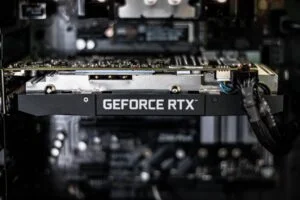When it comes to gaming, lag and jitter can be extremely frustrating. We gamers want the smoothest possible experience when playing our favourite games.
So how much jitter is acceptable for gaming? While this may vary from person to person, certain standards can help determine an ideal amount of jitter for gaming.
When it comes to gaming, what exactly is jitter? A jitter is a measure of the fluctuation in latency or ping over time.
It’s caused by network congestion, which can cause spikes in lag and latency. The more jitter you experience, the more choppy your gaming experience will be. So how much jitter is considered acceptable for gaming?
Why is Jitter Important for Gaming?
Jitter is incredibly important for gaming, as it impacts the overall quality of your gaming experience.
You may experience choppy gameplay, lagging, or even disconnections without proper jitter management. All these issues can be extremely annoying and make playing a game difficult.
Jitter is especially critical for competitive gamers who require smooth performance to stay ahead of their opponents.
Measuring Jitter
How is Jitter Measured?
Jitter is measured by looking at the fluctuation in latency or ping over time.
A tool like PingPlotter can be used to measure jitter and allow you to visualize the spikes in latency. By looking at the graph, you can quickly identify how much jitter is present in your connection.
Jitter should ideally stay below 30 milliseconds for the best gaming experience.
What Are the Benefits of Low Jitter?
When it comes to gaming, low jitter is always better.
With low jitter, your games will be smoother and more responsive. You’ll also experience less lag and fewer disconnects, which can make a huge difference in competitive play.
Low jitter also means you can enjoy a more immersive gaming experience without frustration or pauses.
How Much Jitter is Acceptable for Gaming?
When it comes to gaming, how much jitter is acceptable? Generally speaking, you should aim for jitter levels below 30 milliseconds.
This will ensure the smoothest possible gaming experience with minimal lag and fewer disconnects.
To keep your jitter low, make sure you have a good internet connection and minimize any network congestion. It’s also important to have the right hardware (such as a gaming router and quality cables) for the best performance.
Network Factors Affecting Jitter
Internet Speed & Service Providers
Internet speed and service providers play a huge role in jitter, as they can have an impact on the amount of data your connection can handle.
If you’re using a slow internet connection or a bad service provider, your connection is more likely to become congested and cause jitter.
To minimize this issue, make sure you’re getting the best possible speeds with a reliable provider. Additionally, consider upgrading hardware such as routers or modems to ensure you’re getting the best performance from your setup.

Wired vs Wireless Connections
When it comes to gaming, it’s important to consider the type of connection you’re using. A wired connection (using an Ethernet cable) tends to offer better speeds and less jitter than a wireless connection.
This is because wired connections don’t rely on radio waves or interference, which can cause spikes in latency. Additionally, they can handle more data at once compared to wireless connections.
However, wired connections are limited by their range and can be difficult to install in some locations.
Network Congestion & Latency
Network congestion and latency are two very important factors when it comes to jitter.
Network congestion occurs when too many people are using the same network, which can cause spikes in jitter.
This is why it’s important to have a good internet connection that can handle the amount of data you’re using.
Latency is also an important factor and refers to the time it takes for your data to travel from point A to point B. The higher your latency, the more likely you are to experience jitter.
Quality of Service (QoS) and bandwidth
When it comes to gaming, Quality of Service (QoS) and bandwidth can be a major factor in jitter.
QoS is a feature found on many routers that allows you to prioritize certain network traffic, such as gaming or streaming. This ensures that your gaming connection always gets the most bandwidth possible, which can help minimize jitter.
Additionally, having enough bandwidth is essential for reducing jitter.
If you’re trying to game on a slow internet connection, there isn’t enough data being sent and received between devices, which can lead to spikes in jitter.
Gaming Servers & Physical Distance
The server you’re connecting to can also affect jitter. If the server is far away physically, it will take longer for data to travel between your computer and the server, leading to higher latency and more jitter.
Additionally, if the server is overloaded or not optimized for gaming, this can lead to spikes in latency and jitter as well. To reduce these issues, make sure you’re connecting to a gaming-optimized server that’s close by.
Minimizing Jitter for Online Gaming Performance
Analyzing Connection Quality & Ping Speeds
An important part of ensuring the best possible online gaming performance is analyzing your connection quality and ping speeds.
This will help you identify any potential issues that could be causing jitter or latency spikes.
To do this, you can use tools like Pathping or Pingplotter to test your internet connection and see how it’s performing.
You should also check your ping (the time it takes for data to travel from your computer to its destination) and make sure it’s within acceptable levels. Generally, a ping of around 50ms or less is acceptable for gaming.
Adjusting Settings to Reduce Jitter Levels
If you’re experiencing high levels of jitter while gaming, there are a few settings you can adjust that may help reduce it.
First, look into your router and modem settings and make sure they’re optimized for gaming. This includes turning off Quality of Service (QoS) settings, enabling low latency mode, and reducing the number of active connections.
Additionally, try using a wired connection when possible as this will provide more reliable speeds than a wireless one. Lastly, consider upgrading your internet connection to one that’s faster and more reliable.
Monitoring Audio/Video Quality for Lag-Free Streaming
When it comes to streaming media like movies or music, there are a few things you should keep an eye on to make sure your experience is lag-free.
First, be sure to monitor the audio and video quality of your stream.
You want to make sure that the content looks and sounds great so that you can enjoy it without any interruptions.
If the quality begins to suffer, this could be an indication of jitter or latency issues.
Additionally, try using a wired connection when possible as this can help reduce jitter and improve overall streaming quality.
The Bottomline
With the right tools and settings, you should be able to reduce jitter levels and enjoy lag-free gaming.
Additionally, making sure your internet connection is fast and reliable enough for gaming will help ensure that you don’t experience any issues with jitter.
Lastly, if all else fails, consider upgrading your internet service plan as this can make a huge difference in improving your gaming performance.
ALSO CHECK OUT:








